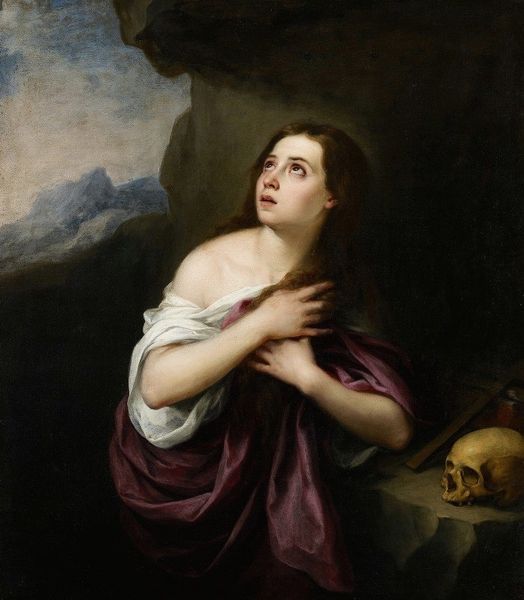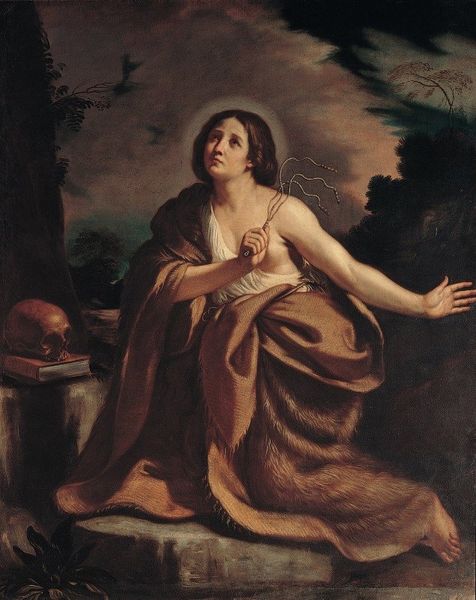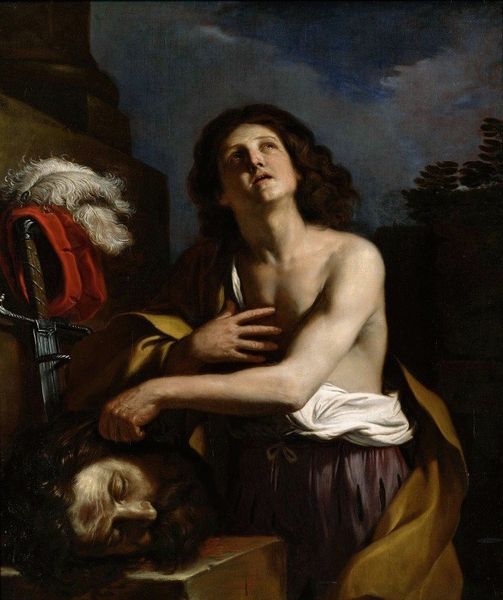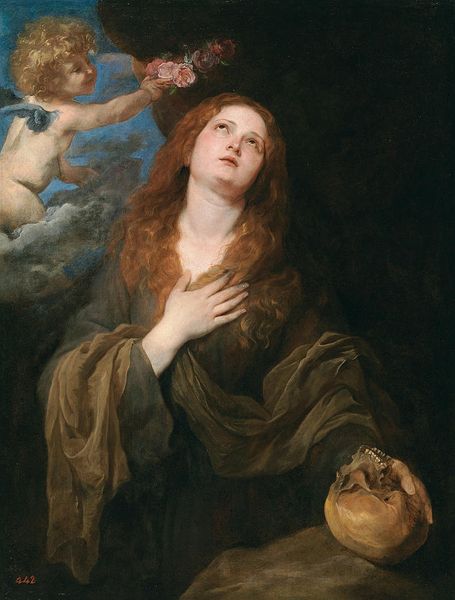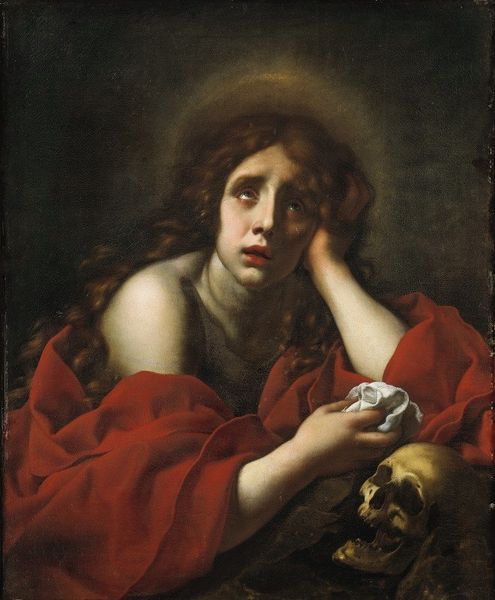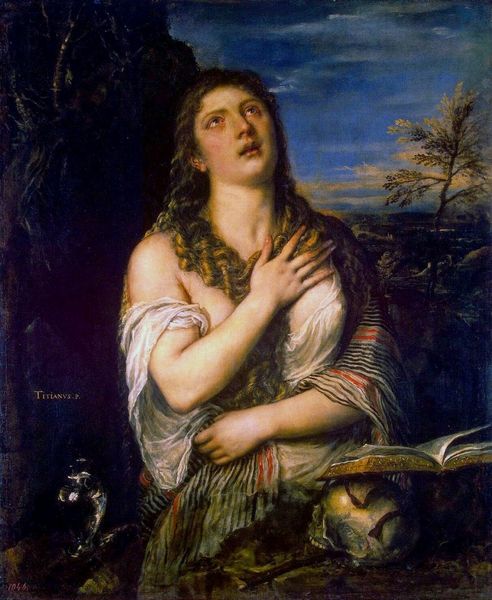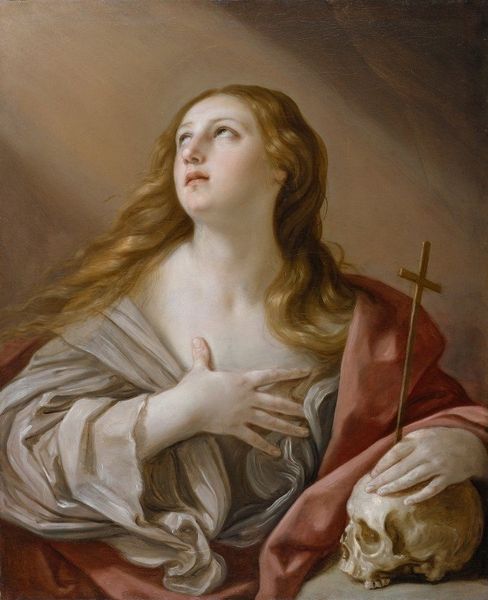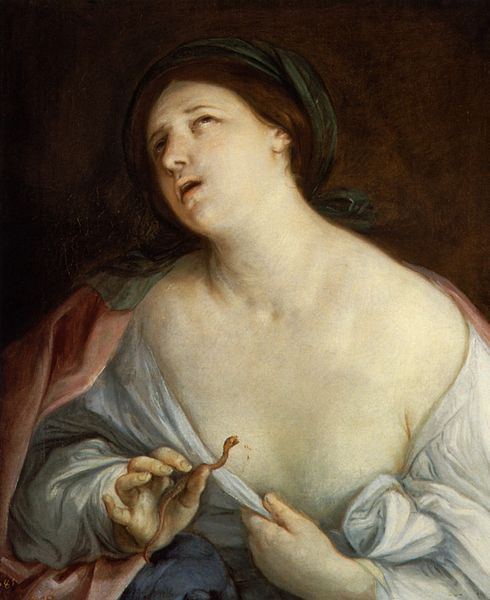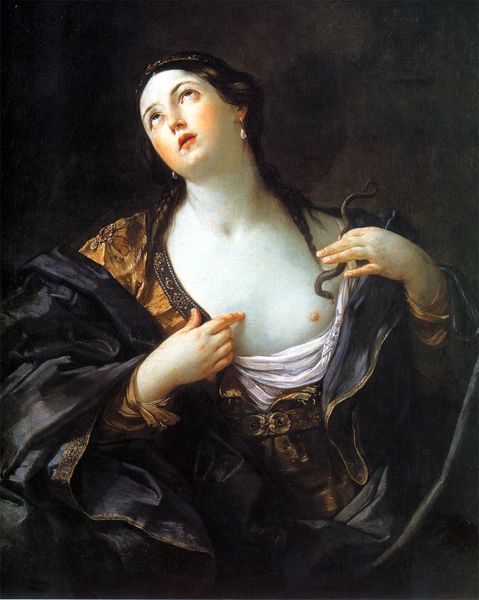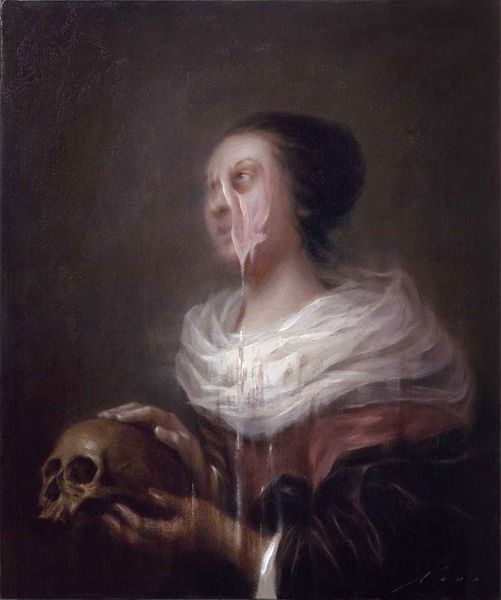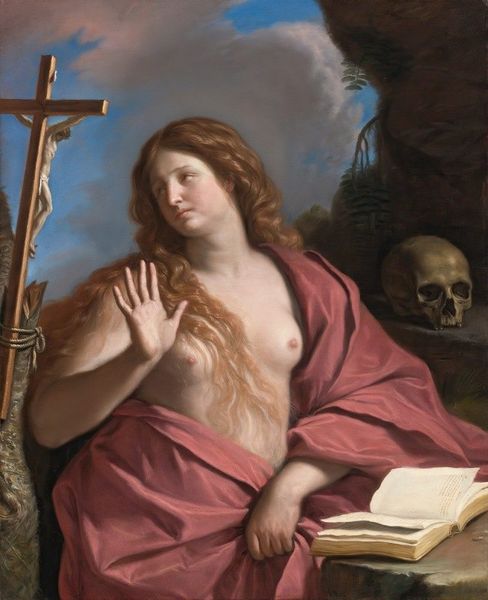
painting, oil-paint
#
portrait
#
baroque
#
painting
#
oil-paint
#
vanitas
#
christianity
#
history-painting
Dimensions: 123 x 108 cm
Copyright: Public domain
Curator: Murillo's "Penitent Magdalene," painted around 1665, presents a fascinating subject for contemplation. I am excited to dissect it with you. Editor: My first thought? Dramatic! That upward gaze just pulls you right in, like she's spotted something only she can see in the heavens. Curator: Indeed. Formally, that upturned gaze functions as a vector, guiding our own visual journey upwards through the canvas, from the skull placed at the right of the canvas to the celestial light on the upper left corner, accentuating her connection to the divine. Editor: That skull feels so out of place—yet perfectly at home—you know? Like a stark reminder in a moment of intense spirituality. Kinda like crashing a meditation retreat with a death metal album. Curator: Quite! In Baroque art, such objects were strategically used as elements of "vanitas"—symbolizing the ephemerality of earthly life, here serving to highlight Magdalene's renunciation of worldly pleasures. Murillo very elegantly contrasts themes of transient, earthly life with promise of divine redemption through symbolic means and contrasting formal devices. Editor: It's heavy, right? But it also feels strangely comforting, like finding solace in letting go. And the red in the folds of her drapery—it echoes blood and passion. Very raw stuff for a supposedly religious scene. Curator: Note, if you will, the composition's strategic use of chiaroscuro to enhance the scene's drama, heightening the painting's emotional impact and amplifying Magdalene’s profound moment of conversion. What’s more, the very limited use of a spectrum of pastel shades in this particular piece suggests an economy of emotion from Murillo himself. Editor: I like how this feels so contemporary, even though it's centuries old. This painting speaks to the timeless human quest for meaning, the struggles with morality, and search for something bigger than ourselves, right? That Magdalene is a universal stand-in for the messy, beautiful business of being human. Curator: Ultimately, Murillo provides a space, albeit brief, for reflecting on our place within existence itself, evoking a sense of timeless contemplation on faith, mortality, and beauty. Editor: It gives one pause, indeed. A really poignant way to conclude this encounter.
Comments
No comments
Be the first to comment and join the conversation on the ultimate creative platform.
